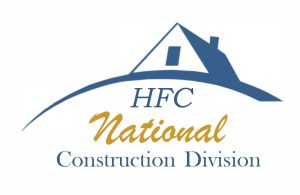
Understanding Your Loan Costs
As a buyer, it makes sense that your number one question would be, “How much is this going to cost me?” You’ll see many costs detailed in the Construction Contract between you and your builder, and then some more on the Loan Estimate that you receive from Home Funding Corporation. It’s important that you understand what all those numbers represent.
Get Started! Apply Now.
"As the name suggests, the One-Time Close loan comes with one set of closing costs that usually fall between 2 and 5 percent of the total price."
What Are Soft Costs?
Soft costs include any and all costs that are the builder’s responsibility. These are not part of the actual construction, but necessary for facilitating it, such as permit fees, engineering fees, architectural fees, inspection fees, construction financing costs, and construction interest.
What Are Hard Costs?
Hard costs are the tangible costs necessary for the actual construction of the home, which includes all materials and labor costs.
Allowances
Funds included in the construction budget, called allowances, are allocated for anything that will be added to the house in the future. This can include flooring, fixtures, and cabinetry.
Contingency Reserve
Some Lenders may add a contingency reserve to the builder’s total, usually around 10 percent. Other lenders leave it up to the builder and borrower to determine an agreeable amount for contingency to be included in the Construction Contract. This is part of construction and is viewed on a case-by-case basis and is based on the total cost and complexity of the house.
Closing Costs
Closing costs can include the usual fees that come with a mortgage, such as application fees, appraisal fees, and credit reports. Closing costs amount to approximately 2 to 5 percent of the purchase price, so it’s a good thing you only have to pay them once with the Single Close Loan!
Interested Party Contributions
Many FHA, VA, and USDA mortgage transactions can be structured to have Interested Party Contributions, sometimes referred to as Seller Concessions. Using these can allow the closing costs/prepaids to be financed into the loan. For example, on an FHA loan where a 3.5 percent down payment is required, assuming the appraisal supports the loan amount needed to cover the costs, the Construction Contract can be structured to include Contributions from the Builder for the borrower’s closing costs/prepaids.
Structuring the loan in this manner allows the borrower to invest only 3.5 percent of the acquisition cost, otherwise, the borrower would have to invest that, plus their closing costs/prepaids. The seller can also contribute towards closing costs/prepaids, but the total contributions from all interested parties cannot exceed 6 percent of the acquisition cost on FHA loans.

